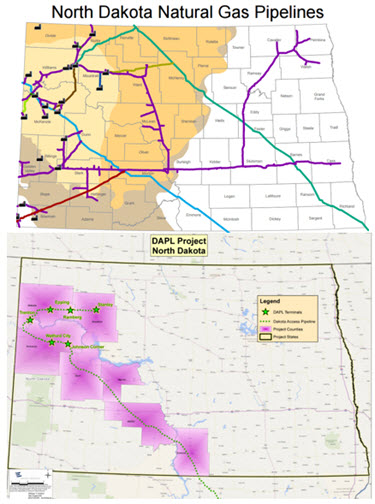WASHINGTON, Nov. 10, 2016 - The head of the Standing Rock Sioux Tribe is asking the Army Corps of Engineers to rethink its conclusion that the Dakota Access Pipeline does not pose a risk to the waters of Lake Oahe in North Dakota and to tribal members, who draw their drinking water from the lake.
In a letter to Jo-Ellen Darcy, assistant secretary for the Army for public works, tribal Chairman Dave Archambault II cited a new tribe-funded study on the potential impact of the pipeline.
“This underscores one of the fundamental deficiencies of the Final EA (Environmental Assessment) – it assumes, without foundation, that placing a massive oil pipeline just upstream from the reservation presents no risk to the Tribe,” Archambault said in his letter to Darcy.
The report, prepared by Richard Kuprewicz of Accufacts Inc., analyzed the government’s EA and concluded that it failed to address pipeline safety, calling the assessment “seriously deficient,” and saying that potential risks and impacts to the federal areas and waters have not been adequately presented nor evaluated.
Kuprewicz contends that additional information, not provided in the government’s assessment, is needed to “prudently assess” the pipeline proposal – as well as to evaluate “various key assumptions and claims” that the Corps relies upon in “their incomplete mitigation approaches and finding.”
“Mr. Kuprewicz’s findings reflect the common-sense point that was somehow lost in the Final EA – that pipelines leak, and that when they do so there are often devastating consequences, particularly when the leak contaminates water,” Archambault continued in his letter. “The public record is filled with examples which further substantiate this point.”
Jan Hasselman, who represents the Tribe in a lawsuit filed against the Corps, says the failure of the Corps to adequately assess oil spill risks from the pipeline also brings into question the legality of the Corps’ review.
“The law requires a full and transparent analysis of risks like oil spills prior to issuance of a federal permit. It’s clear that never happened here,” Hasselman says. “We expect the Corps to give this new report close consideration as it determines whether to move ahead with the permits needed to cross the Missouri River – permits that Dakota Access didn’t have before starting construction of the pipeline.”
Craig Stevens of the Midwest Alliance for Infrastructure Now, a supporter of DAPL whose members include the South Dakota Corn Growers and the South Dakota Grain and Feed Association, rejected Kuprewicz’s findings, asserting that the report should not be given the same value as the Corps’ assessment.
“That an activist-funded, back-of-the-envelope commentary is even mentioned in the same breath” as the Corps’ analysis – which considered independent research and study, public input, and impact mitigation plans – “is not only ludicrous but also insulting to the dozens of Army Corps of Engineers and civil servants who toiled more than two years to ensure this pipeline project adhered to our nation's rigorous regulatory requirements,” Stevens said in a statement to Agri-Pulse.
 Protests by native Americans and their supporters
have delayed completion of the 1,170-mile long Dakota Access Pipeline. The $3.8 billion project, which is about three-quarters
complete, is designed to carry as much as 570,000 barrels a day of shale oil
from North Dakota’s Bakken field to the pipeline networks and refineries of
Illinois. Much of the Bakken oil produced now travels by train and the pipeline
would lower costs.
Protests by native Americans and their supporters
have delayed completion of the 1,170-mile long Dakota Access Pipeline. The $3.8 billion project, which is about three-quarters
complete, is designed to carry as much as 570,000 barrels a day of shale oil
from North Dakota’s Bakken field to the pipeline networks and refineries of
Illinois. Much of the Bakken oil produced now travels by train and the pipeline
would lower costs.
Pipeline supporters point out that, while the Dakota Access pipeline has been heavily criticized by the Standing Rock Sioux Tribe, they did not express similar concerns when a natural gas pipeline was built across roughly the same area in 1982. The Northern Border pipeline is illustrated in blue on the map at left and crosses Lake Oahe near the same location as the Dakota Access pipeline.
President Obama said recently that the Army Corps was considering ways to reroute the pipeline. “We’re going to let it play out for several more weeks and determine whether or not this can be resolved in a way that I think is properly attentive to the traditions of First Americans,” he said.
A Corps spokesman said the agency cannot comment on the easement process while it is being reviewed at the national level.
#30
For more news, go to: www.Agri-Pulse.com


